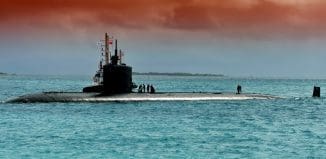New Publication: US Drone Anti-Terrorist Attack Policy

This post is also available in:  עברית (Hebrew)
עברית (Hebrew)
The White House has released an edited version of President Barack Obama’s once-secret policy on using drone aircraft to combat terrorists around the world, due to a federal court order, the American Civil Liberties Union said.
An 18-page document listing “presidential policy guidance” on the drones issue lays out what it says are safeguards to minimize civilian casualties caused by remotely piloted aircrafts. It calls for American forces to use such weapons only when there is “near certainty” that a terrorist target is within range, and that civillians will not be killed or injured.
Operational plans for killing or capturing terrorist suspects, usually conceived by the CIA or the U.S. military, are reviewed by the National Security Council. The documents indicated that representatives of other Cabinet departments and agencies may meet to discuss a specific attack plan, but the president’s NSC makes the final decision.
A federal court ordered the government six months ago to disclose the policy document, known informally, according to voanews.com, among top-level U.S officials as the “playbook” for drone use, in response to a lawsuit by the ACLU citing the Freedom of Information Act. The released version was described as “redacted,” or edited to withhold specific details whose release could compromise U.S. national security.
The Obama administration issued a summary of its policy on using drones in a 2013 fact sheet, but the current lengthier version sets out the law and rules the government follows when orders are issued for targeted killings and the capture of terrorist suspects on foreign soil.
A spokesman for the U.S. National Security Council, Ned Price, said, “The president has emphasized that the U.S. government should be as transparent as possible with the American people about our counterterrorism operations, the manner in which they are conducted and their results,” according to Reuters.
“Our counterterrorism actions are effective and legal, and their legitimacy is best demonstrated by making public more information about these actions as well as setting clear standards for other nations to follow,” the NSC spokesman added.
The administration has said in the past that unmanned aircraft are essential tools in the effort to combat extremist militant groups in countries such as Pakistan, Afghanistan and Yemen. Some drone strikes have killed civilians who were not targets, igniting local anger. One month ago, the White House said that drone attacks and other airstrikes have killed between 64 and 116 civilians since Obama’s administration began in January 2009. Through the end of 2015, U.S. officials said, American forces launched 473 strikes, mostly with drones, that killed roughly 2,400 to 2,600 terrorist “combatants.” Critics said the civilian toll from U.S. airstrikes was undercounted, since the administration’s report did not include drone strikes in Afghanistan, Syria or Iraq. In 2013, U.S. Senator Lindsey Graham said information he had gathered indicated U.S. drone strikes had killed 4,700 people.




























